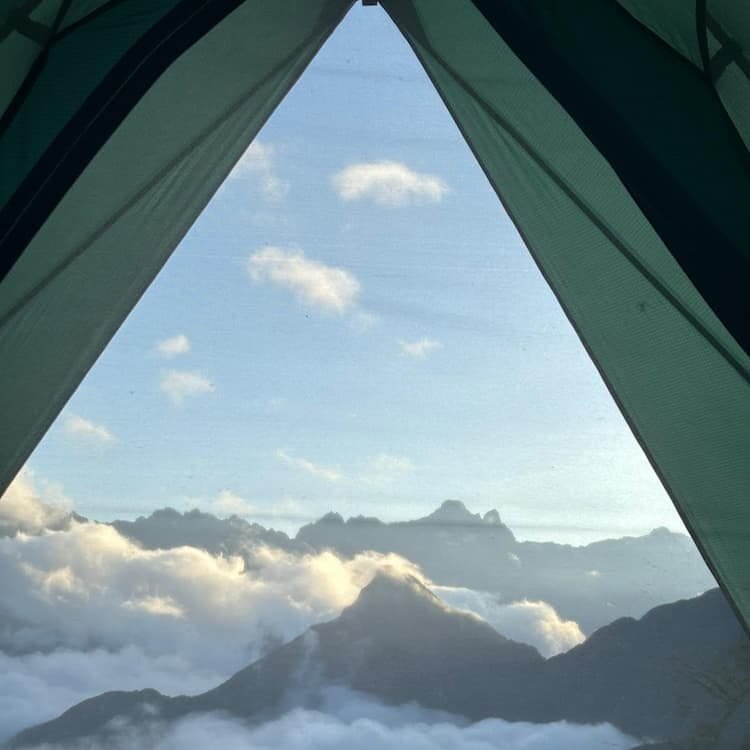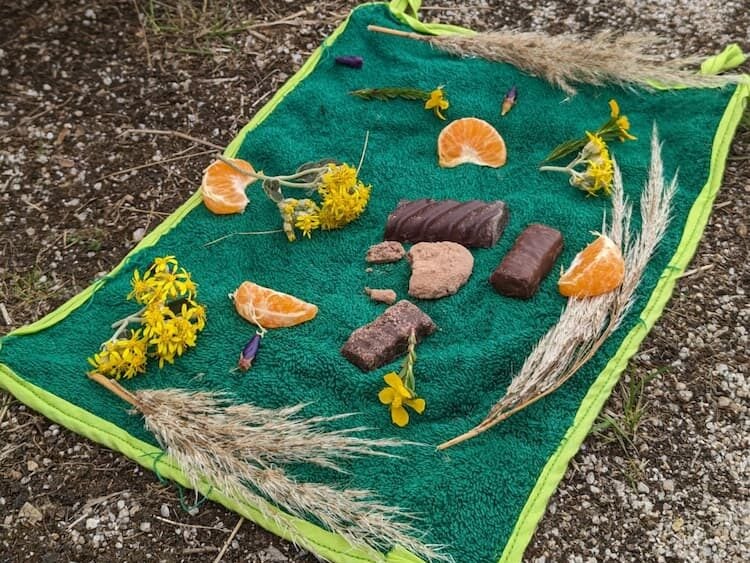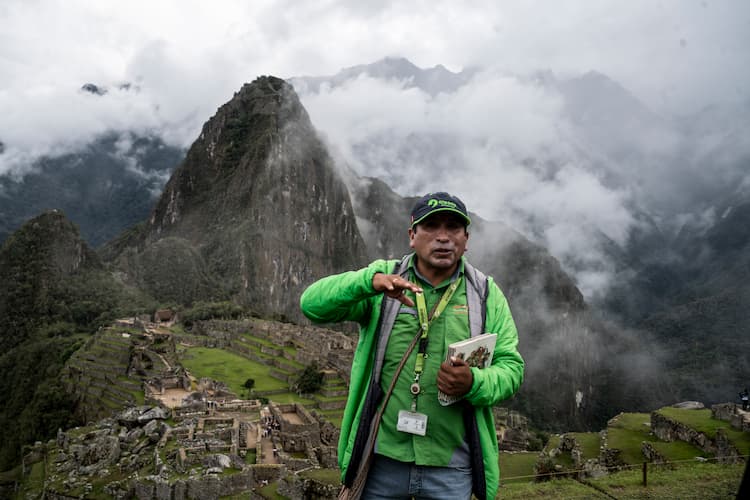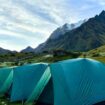
We are reader-supported and may earn a commission on purchases made through links in this article.
I knew we were in trouble when I saw color drain from her face and her eyes glaze over. Unresponsive, my dear friend and travel companion lost consciousness in a trendy vegan Peruvian restaurant just a few hours after ascending 11,000 ft from sea level Lima to mountainous Cuzco.
My friend’s daughter and I screamed in Spanish and English. Llama a una ambulancia, mi mamá/amiga necesita ayuda….call an ambulance, my mom/friend needs help! Hospital labs reveal low sodium is the culprit exasperated by altitude sickness. Turns out traveling from sea level In Lima to 11,000 feet in Cuzco is a tricky business.
Best Tips & Tools to Plan Your Trip
In the recovery days that followed, we revised our trekking plans dividing up and scaling back. A two day Sacred Valley tour for my friend and her daughter while I opted to keep to our original plan: a five day/five night Salkantay Trek until reuniting the last night to see the Machu Picchu Inca ruins together.
Plans set, I was a bit nervous about a high altitude 72km/45 mile trek with a random group of 8. After all, selecting a Peruvian trek in the 80,000 acres of Machu Picchu is complicated. Youth Hostels and do it yourself hikes are plentiful yet rough and risky given the tricky terrain, high altitude and language barriers.
Sedentary bus tours hand held by local experts, too soft for someone looking to hike, climb and come back fitter than when vacation started. Luxury personal guided tours are too expensive. Fortunately, thanks to my friend’s pre-trip research, the Salkantay Trek was a perfect blend of hard but not too hard.
The night before the trek, I met in downtown Cusco with my trekking group. As expected, being in my 50s, I was the oldest.

Our group of eight including native guide Jhymy rounded out with a pair of New Zealand traveling doctors in their late 20s, a sea craft specialist also in his late 20s, a teacher from England in her mid 20s and two college age friends, one from France and the other from Australia, taking holiday from their Chilean study abroad program.
Our leader Jhymy radiated confidence while my fellow hikers were welcoming and friendly. Immediately, I was put at ease. Duffels packed, gear checked, we set off for the Salkantay Trek the next day.
The Salkantay Trek cleverly avoids Machu Picchu crowds with the ‘secret formula’ of an extra night head start camped in individual stargazing huts close to the must see Humanitay Lake. We beat the roosters on day 1, rising at 4:30AM for breakfast and hike.
The reason for the early wake up became clear after two hours of serene yet strenuous uphill high altitude hiking where we were rewarded with stunning glacier views and close proximity to a local gem: a naturally crystalized blue glacier lake. Legend tells us that those who touch it will stay young forever.
According to Catura indigenous owner of Alpaca Expeditions Raul Colgue Colgue, who started in tourism as a rural porter, the timing of the first day gives their customers a private hiking experience within a heavily visited region.
Colgue explains: Apart from being a sustainable tour company using local organic produce/meats, boiling water on trail vs. plastic bottles and hiring local indigenous staff; I am most proud of the seclusion of this hike developed over the course of a few years.

The uphill morning hike to the glacier lake is a killer. Not yet altitude acclimated, I had to stop every 15-20 minutes to catch my breath. You feel bad at the moment but soon recover. Not unlike climbing other steep mountain trials albeit a slower high altitude pace.
Good news for me was that despite our age difference, the pace for all is slow and steady. Completely doable for the averagely fit although day one being the hardest you must keep a marathon mindset.
Especially for the equally challenging afternoon highlighted by reaching our highest point Salkantay Pass at 4600m/15157ft. Celebrated with lots of yells, whoops and high fives amid the blustering winds. The ascent felt blissful knowing we were done with the steepest climb.
After a night of tent sleeping at our private campsite, Day two brought us down the mountain and into lush jungle surroundings with stretches of orchids and begonia flowers hummingbirds circling above with Inca constellations in the sky at night.
Day three, a blissfully shorter day, included a lunch visit to a small coffee farm where we got our hands dirty picking the red beans from the plants then husking, roasting and grinding. Jhymy also shared some of his indigenous life experience with us performing a Pachamama (Mother Earth) ceremony.
A ceremony traditionally done annually August 1 by indigenous people of Andean culture, Pachamama is worshiped as the creator of the natural world making life possible and supporting fertility. Jhymy explained, Pachamama gives us what we need to live.
Materials for shelter, water and food to sustain life. Offerings are given to Pachamama and expressions of gratitude and edible gifts are offered beginning with three ceremonial coca leaves to give back to Pacha for all she has given to us.
Day Four took us into Cusco where we checked into a tour hotel and I was reunited with my friends and met up with their guide Walter. Day Five was Machu Picchu with Walter later catching the train for 90 minutes then touring back to Cusco.
Altogether unforgettable and value priced significantly less than $1,000 for the inclusive trek.

My fellow trekker friend Karl was especially impressed having grown up in Anchorage, Alaska USA where he got to know Alaskan tour operators remarking: To get an equivalent fully catered trek experience in Alaska, the bill would be exponentially greater than the Salkantay Trek, into the thousands of dollars.
Another benefit to trekking Peru, according to an Oxford trained biologist I met while doing research in rural Peru, is its positive impact on the environment. He explained that there are virtually no other opportunities for employment for locals other than tourism in the rural Machu Picchu region.
When tourism goes away, people resort to hunting to make money which upsets the regional ecosystem.
Approaching a trip like Peru, best to keep a flexible mindset. Peru itself is a wildcard. Sometimes things will go well and other times not so well. Plans may change mid-hike due to weather, high altitude, staffing or other variables.
A certain amount of risk must be assumed and tolerated. For those who can stomach flexibility; a mid-level, mid-budget experience like Salkantay Trek can satisfy the need for an affordable and achievable high mountain physical challenge with the side effect of seeing stunning views, absorbing colorful culture and learning rich, ancient Inca/Catura history.
If You Go:
Machu Picchu Region of Peru
Be mindful of the altitude. Visit your local travel clinic ahead of time. Having altitude pills and a broad spectrum antibiotic to take as needed were super helpful.
Spend a few days in Cusco acclimating to 11,000ft. before you trek.
Soles is the currency. US dollars are not typically accepted in the rural areas.
Check the weather frequently and pack with layers as conditions change throughout the day.
Depending on where you live, you may find the driving crazy and intense with drivers often using their horns vs. following stop lights or signs. Use caution crossing streets.
As one of the most biodiverse places on the planet, the array of fresh food will delight you. Be sure to try all the things including their National drink Pisco Sour.
Dry season is from April to October where you can expect more consistent sunny days and clear skies.
Inspire your next adventure with our articles below:
Author Bio: Catherine Tyink is a freelance writer, editor and ghostwriter. Tyink has published three books and has written for several magazines. She lives in Wisconsin USA where she tells true stories, rides bikes and hikes trails to exercise her heart in more than one way.

